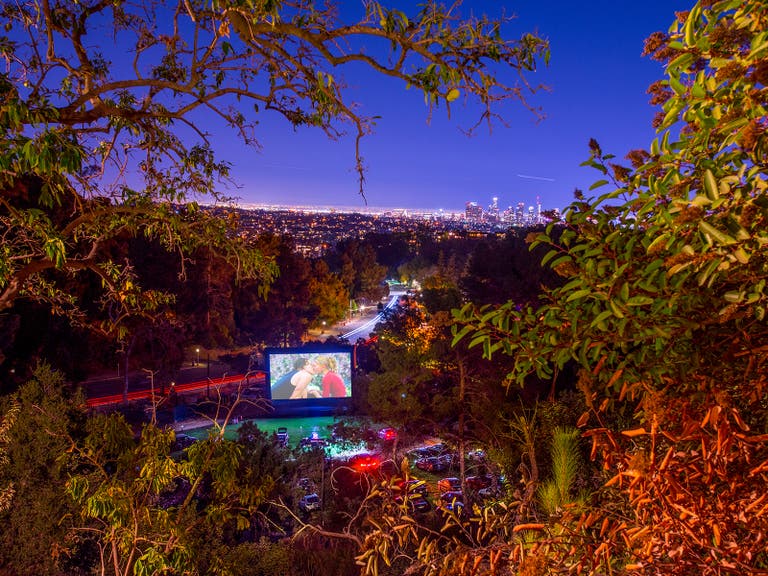Discover Los Angeles State Historic Park in Downtown L.A.

Locals often refer to the patch of land next to the Chinatown Metro Gold Line stop as "the Cornfield." But, you won't find any husks rising from the ground here. Instead, Los Angeles State Historic Park, which reopened on Earth Day 2017 after three years of renovations, is a 34-acre testament to power of community, a home to grassland, orange trees, public art and a mile-long run/walk trail in a spot that almost became a collection of warehouses.
"This means a 20-year dream coming into reality for the community surrounding Northeast Los Angeles and Chinatown," says Assemblymember Jimmy Gomez, who represents Chinatown and other nearby neighborhoods in the California State Assembly.
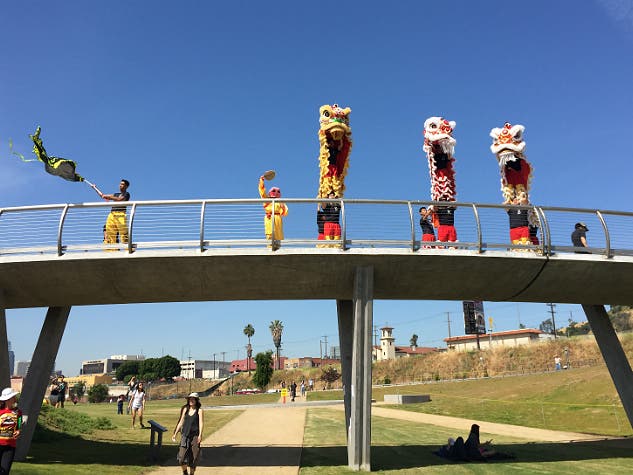
This historic home of Tongva Native Americans, L.A. State Historic Park was the site of the Zanja Madre Aqueduct in the early days of the Pueblo de Los Angeles. By the late 1800s, it was a rail yard and remained that way for over a century. In 1999, the land was about to change hands from Union Pacific to a developer who wanted to turn the area into one million square feet of warehouse and industrial space.
Residents of the surrounding neighborhoods were not keen on increasing the industrial footprint in an area that was lacking public projects like schools and parks. They formed the Chinatown Yards Alliance, joined forces with a few key influencers, and ultimately stopped development. The people prevailed - in 2001, California State Parks acquired the property. It took another 16 years to get the park that the neighborhood needed.
Sean Woods, Superintendent of the Los Angeles Sector for California State Parks, explains that there simply wasn't the money available to get the park going immediately. They had enough in the budget to set up a smaller, temporary park on the site. In that time, the Cornfield became a temporary home for plenty of different events. It was the site of the "Not a Cornfield" land art project. Dance music fanatics will recall this as the former home of the HARD festivals.
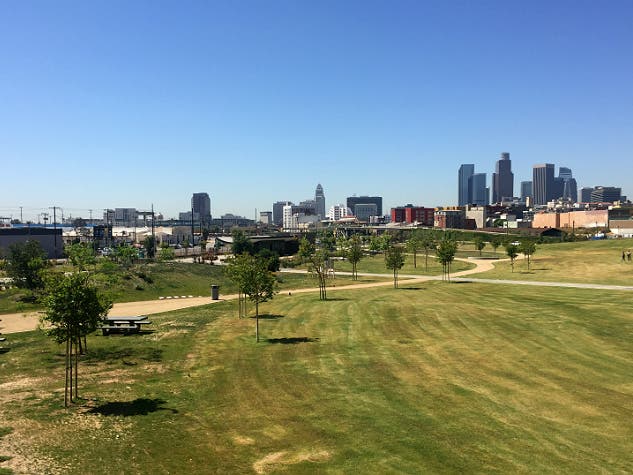
The new and improved park isn't just a space for the community to visit, it's one where the community has an input in what happens. LASHP essentially launched California's Promotoras Program, where locals are hired to handle community outreach. "There's the thought that you own it, or I build it and they will come. It's a very passive way of park planning," says Woods. "You can have a beautiful park and you'll have people coming to it, but some people might think that that park is not for me because they don't feel that there are things in the park where there are facilities or programs or cultural events that resonate with their community or culture."
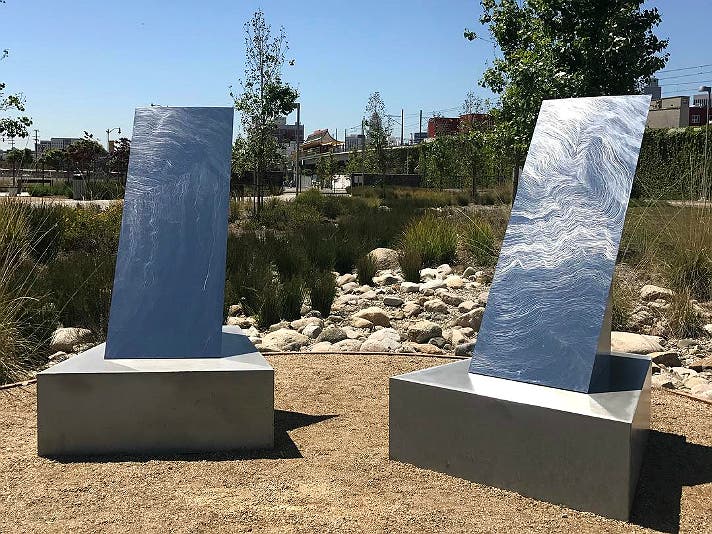
Los Angeles State Historic Park incorporates both the long history and diverse communities of the neighborhood into its design. The public art inside the park includes "Origins," a sculptural piece by Debra Scacco that was inspired by the nearby L.A. River. "When I conceived the piece, it was particularly with this patch of land in mind because it really is about the changing courses of the river and the changing courses of this site, the original Zanja Madre," says Scacco. "There's a particular relevance to it and I'm delighted that it's going to live here."
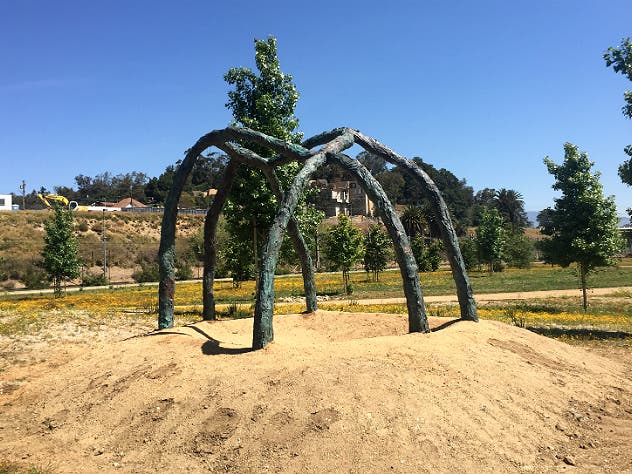
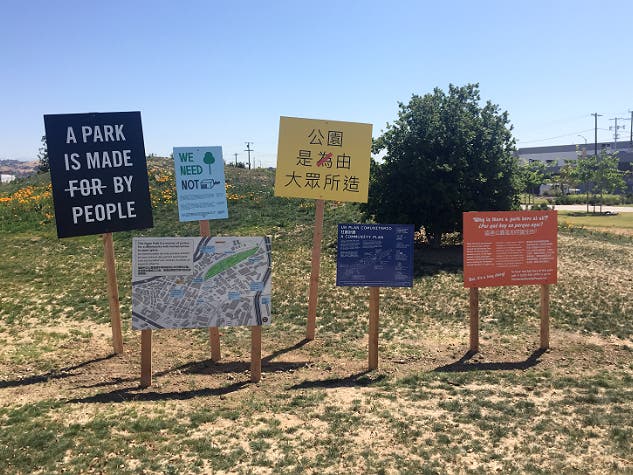
Rosten Woo's installation, "A Park Is Made By People" recalls the struggle to save this land from industrial redevelopment with protest signs.
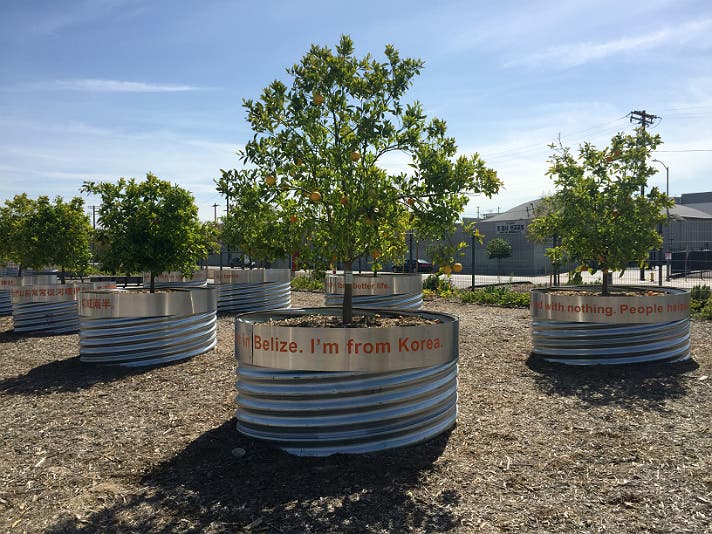
Fallen Fruit, who have planted trees across the U.S., brought their "Endless Orchard" project to the park too. The Fallen Fruit artists interviewed nearby residents and used their quotes to form poetry that appears on the planters surrounding Valencia orange trees. "In terms of the historical nature of the park, it's meant to represent California's second gold rush, which was the citrus industry," says Stephanie Campbell, who manages the creative projects for LASHP, of the orange grove.
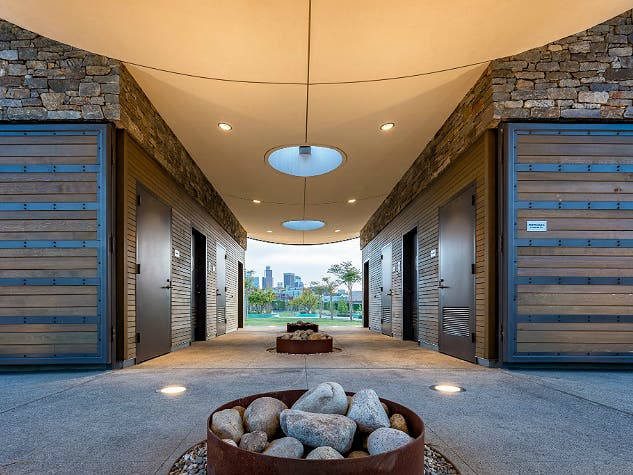
There's a lot to see at LASHP, from the art to the pavers that go back to the land's life as a rail yard, and "rock pockets" - small dugouts filled with rocks and plants that will collect rain water. Then there is the view of the Downtown L.A. skyscrapers in the distance, a view that becomes all the more beautiful when standing on top of a small bridge in the middle of the park.
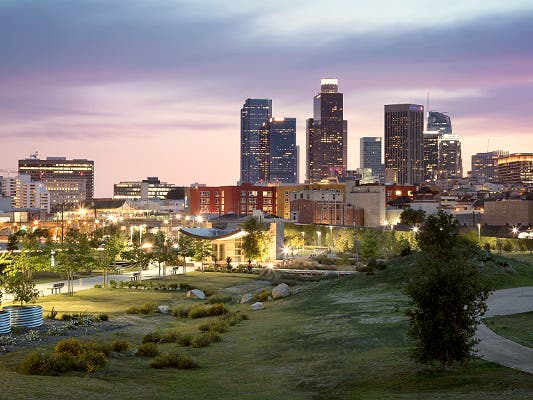
GETTING THERE
Los Angeles State Historic Park
1245 N. Spring St, Downtown L.A.
323.441.8819
lashp.com
L.A. State Historic Park is open daily from 8 a.m. to sunset.
There is parking available inside the park, as well as on the streets and in nearby lots.
LASHP is located next to the Metro Gold Line Chinatown station, so you can Go Metro for a very convenient way to get there.
